Potential Nexus 5 FCC Approval Reappears - LG-D820 (Update: Snapdragon 800, Android 4.4)
by Brian Klug on September 5, 2013 9:30 PM EST- Posted in
- Smartphones
- LG
- Mobile
- *VA
- Nexus 4
- Android 4.4
- KitKat
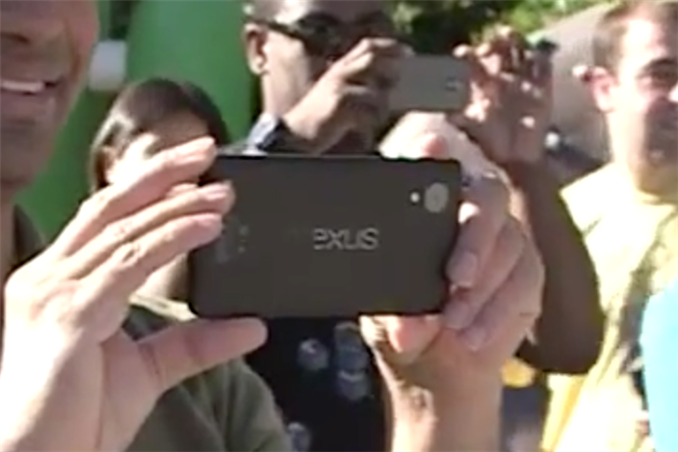
The past few days have been interesting in the way of Nexus 5 (or Nexus 4 2013) rumors. After a few grumblings that seemed to confirm that LG would once again be responsible for the smartphone Nexus slot, there was silence, an FCC approval disclosure and then retraction, and then purported spotting of the Nexus 5 in Google's KitKat announcement video.
Today the FCC re-posted the approval documentation for ZNFD820, or the LG-D820 model, a device which is steadily gaining traction as potential candidate for the Nexus 5. Although as usual LG has requested confidentiality on the internal, external, and test setup photos, what's particularly interesting is that the wireless charging disclosure includes some shots of the device's battery cover and its inductive charging and NFC coils. In addition the back is not designed to be user replaceable, and there's no microSD card slot. The backside appearance seems to line up with the visual appearance of the Nexus device from the video as well, with similar shape and oddly oversized cover glass for the camera aperture. Keep in mind the photo is of the inside of the battery cover.
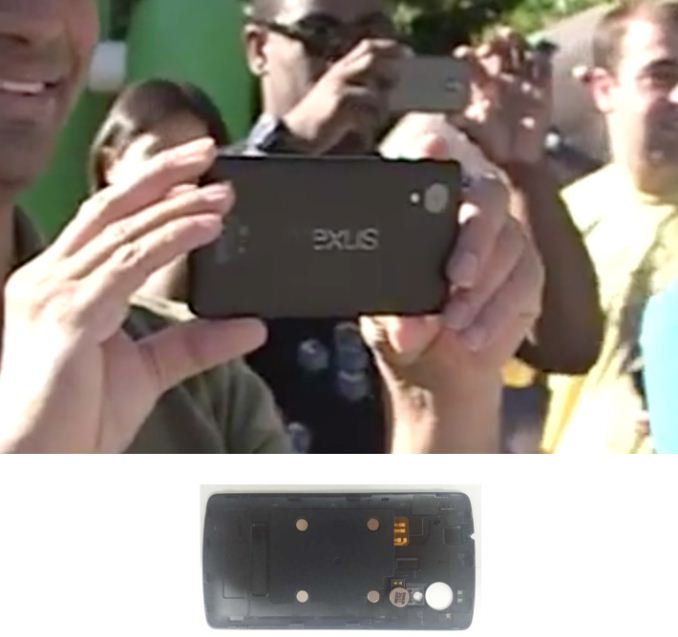
Video appearance of purported Nexus device (above), LG-D820 rear cover rotated and scaled (below)
What's interesting about the LG-D820 approval is that it includes almost all of the bands you'd want for a North American SKU that covers LTE, CDMA, and HSPA+ for AT&T, T-Mobile, and Sprint. There's no Verizon LTE (Band 13) in this band coverage. Non inclusion of Verizon LTE banding in an upcoming Nexus isn't much of a surprise after relationship issues following Galaxy Nexus (CDMA/LTE), inclusion of Sprint is a bit of one, but not as much (Google Voice, Google Wallet).
The breakdown is LTE on bands: 2, 4, 5, 17, 25, 26, 41 (1 and 7 are probable as well, FCC only lists what's relevant inside the USA), WCDMA on bands: 2, 4, 5, and CDMA2000 1x/EVDO on band classes 0, 1, and 10 (800, 1900, 900 MHz). There's also 802.11a/b/g/n/ac (the screenshot above doesn't call out 802.11ac but it is explicitly mentioned and tested in the appropriate sections of the test reports) as well as BT 4.0 LE (Bluetooth smart ready). Inclusion of CDMA2000 1x/EVDO in and of itself is surprising, and the device includes the necessary LTE banding for Sprint, of course CDMA2000 is also relevant in a few other markets in combination with LTE.
Update: Another thing that caught my eye was inclusion of mention that the LG-D820 uses variable antenna matching (antenna tuning) which would be necessary if it's going to accommodate a lot of different bands on just one transmit antenna. This could end up being a Qualcomm tunable frontend part. Display diagonal is also listed as 126.0mm which works out to 4.96-inches diagonal for display, enough to warrant a Nexus 5 name, and a length and width of 131.9 mm x 68.2 mm.
Update: Brad Molen from Engadget caught a reference to MSM8974, aosp_hammerhead and KyeLimePie[sic] inside the disclosure as well. There are two references to MSM8974 (Snapdragon 800) which would to validate that as being the SoC platform and this as a Nexus device running 4.4 which was codenamed Key Lime Pie up until its recent rebranding to KitKat.
It's too early to know for sure if this is the real deal or not, but both rumblings that I've heard and external factors are starting to point in this direction, and inclusion of both AOSP, MSM8974, and Key Lime Pie (now KitKat) references make it hard to refute. S4GRU (Sprint 4G Rollout Updates) was one of the sites tracking LG-D820 on its forums for some time, I've been paying close attention to that situation as well since I heard about that device model and saw the band combinations onboard. Recent attention just intensifies suspicions. The inclusion of LTE in the next Nexus smartphone is an obvious and welcome upgrade, and Google has been indeed pushing for more impressive banding in its devices, which we saw through the Nexus 7 (3G/4G LTE) band combination.


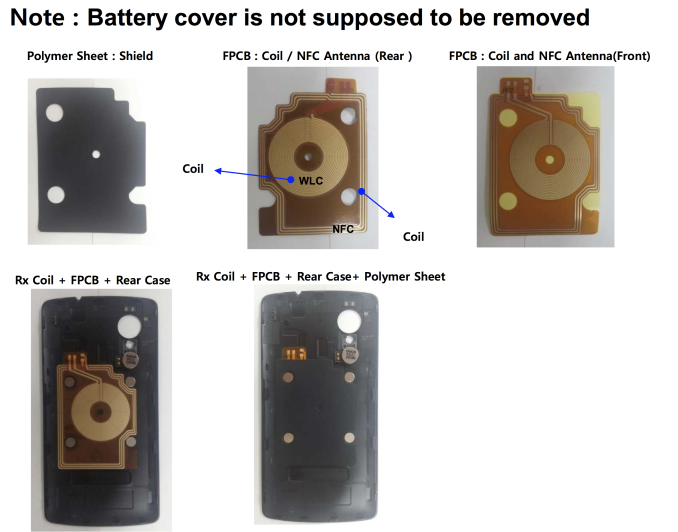
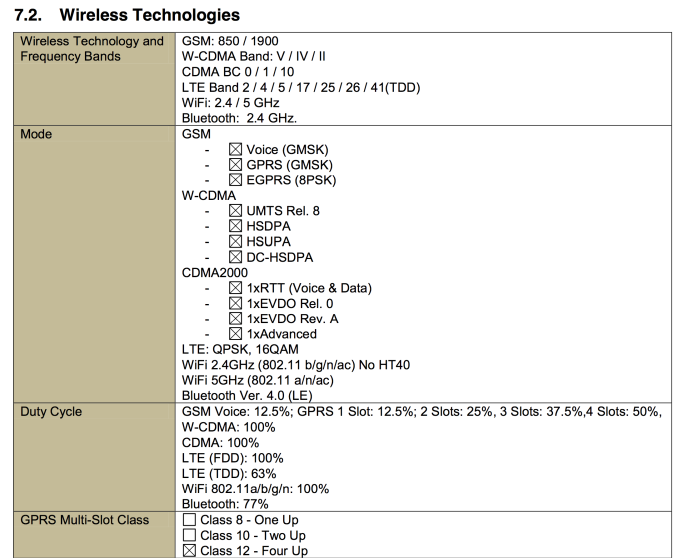
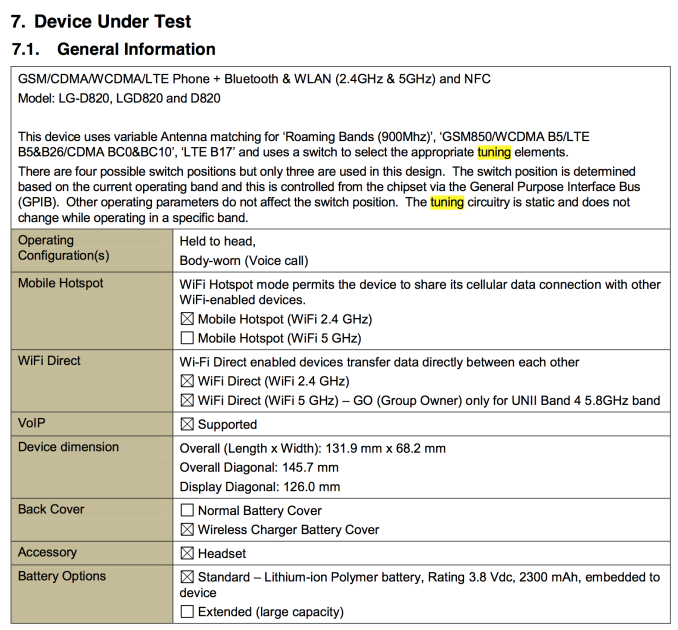
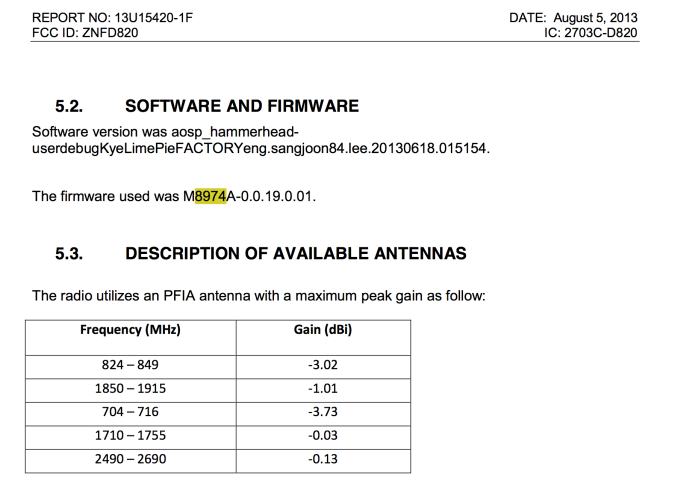








75 Comments
View All Comments
flyingpants1 - Saturday, September 7, 2013 - link
32gb is not too bad. 64gb will be the tipping point, where you can hold 20gb music, 20gb music, and 20gb apps/games.I wish they'd stop increasing the PPI and screen size. And increase battery life instead.
ooooo - Saturday, September 7, 2013 - link
It needs a totally different technology. Why is the battery technology lacking so far behind? Oil companies is why.flyingpants1 - Sunday, September 8, 2013 - link
There's nothing wrong with battery technology, it's advancing at a nice rate.The problem is that manufacturers jump at the chance to make their phone thinner instead of adding more battery capacity or features.
Battery life is probably the #1 complaint regarding Android phones. Then UI lagginess/confusion.
For every 8mm phone out there, there should be a 10mm version with more battery life. Like the Droid MAXX phones. I do not want to carry around a charger or external USB recharging pack just to use my phone.
Wireless charging should be standard.
Silenus - Monday, September 9, 2013 - link
I couldn't agree more. Hey thin is great...but I'd rather have a phone that can truly last a full day under heavy use than one that will slice my finger because it's so razor thin.Davidjan - Friday, September 6, 2013 - link
Why don't use this tiny reader to extend storage:http://goo.gl/U6IyY
DanNeely - Friday, September 6, 2013 - link
1) Drop phone2) Lands on dongle
3) Torque tears uUSB port port off of internal board
4) Phone destroyed
5) ???
6) Profit (for the people selling you a new phone)
fokka - Monday, September 9, 2013 - link
do you honestly see someone use a dongle sticking out of the phone in a daily scenario? also, my usb-port is on the side so...HaloSern - Monday, September 9, 2013 - link
There is no need to support mircoSD cards, since the 16g+ storage is already enough for daily use. Also, microSD with slow reading speed could easily damage the user experience.fokka - Monday, September 9, 2013 - link
i just love how people always try to tell me what "enough storage" is. thank you, i will determine that metric myself, if i may.phoenix_rizzen - Monday, September 9, 2013 - link
16 GB might be enough for those using their pocket computers as simple texting machines, and maybe for a little web surfing.But it's nowhere near enough for those who use their pocket computers to their fullest: music, videos, pictures, apps, backups, documents, etc, etc, etc.